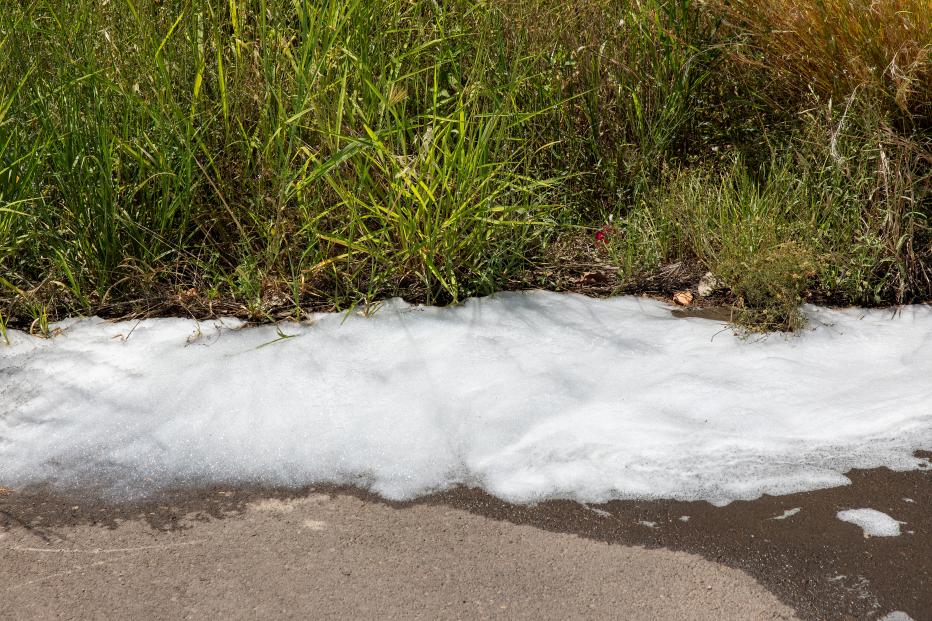PFAS Risk Screening for England’s Environment Agency
Pioneering the use of data, GIS and multi-criteria analysis to accurately prioritize PFAS risk on a national scale

There is increasing public awareness of the risks from per- and polyfluoroalkyl substances (PFAS) to the environment and human health globally, including through the contamination of drinking water supplies. Within the U.K., the presence of some perfluorooctane sulfonic acid (PFOS)- a type of PFAS- and other ubiquitous, persistent, bio-accumulative and toxic substances causes many English rivers to fail to meet water quality standards.
To better understand and prioritize PFAS risks to the water environment across England, the Environment Agency commissioned Jacobs to undertake an initial feasibility study for the development of a digital risk prioritization tool. This was complemented by the development of a Geographic Information System (GIS) portal, numerous technical reports and reference guide s and targeted water sampling around England. The project, which started in 2020 and is still ongoing, has involved extensive engagement with industry peers and partners. The project was highly commended at the Brownfield Awards for the Best Research or Application in the Advancement of Science, Technology or Digital Innovation in the Brownfield Sector.
“It’s been a pleasure collaborating with Jacobs on the development of the PFAS Risk Screening Tool. This partnership has culminated in the creation of a powerful model that has greatly enhanced our understanding of the nature and scale of the PFAS issue, enabling us to more effectively allocate regulatory resource.”
In phase one of the project, an innovative GIS-based approach using spatial analysis techniques and multi-criteria analysis, coupled with water quality sampling data, was used to undertake initial risk prioritization. Subsequent phases have built on this concept, with the development of a user-friendly and accessible GIS portal (the PFAS Risk Explorer) for use by the Environment Agency, and additional focused studies to enhance understanding of significant PFAS sources that may present a risk to the water environment in England.
The project has developed an extensive understanding of the PFAS source contamination potential for a wide variety of industries that are relevant to England, as well as the different types of PFAS that are present.
Phases three and four have taken the research and tool refinement further – including the development of a technical reference guide, completion of economic burden appraisals as well as the scoping, delivery and interpretation of targeted water sampling around England. We also enhanced social value through varied professional development activities including client staff training, webinars, external events, newsletters and on-the-job learning for a diverse team.
As planned, the Environment Agency will now progressively take on the management of the PFAS Risk Explorer. The Agency will use the portal to inform decision-making and support the next phases of investigation and regulation development.
“This has been an innovative project right from the start. It began as a small feasibility study looking at developing a risk screening tool for PFAS and understanding where the highest risk sites might be. It was exciting to see how the potential quickly developed as we combined PFAS know-how and land contamination risk assessment with the power of GIS on a national scale for the first time. Due to its success, the project has since grown exponentially in scale, impact and funding throughout its phases.”
-
3943
Individual PFAS water quality monitoring locations mapped in the PFAS Risk Explorer
-
48
Different PFAS in the monitoring data presentations
Key team members
-

Jane Thrasher, Technical Lead
Awarded for her technical leadership, Jane was the lead on the project since its inception and was also Project Manager through the first three phases. She has been closely involved at every stage of the project and the project has driven the development of her passion for PFAS.
-

Lauren Kiff, GIS Lead
Lauren has built on the foundations laid by other GIS specialists to bring the project to its ultimate goal of transferring the PFAS Risk Explorer onto client systems.
-

Yolande Macklin, Technical Advisor
Yolande has taken the lead on numerous technical tasks, including specialist scientific reviews and the preparation of the reference guide.
-

David Haines, Project Manager
David took on the role of Project Manager as the project expanded to multiple work packages and has been responsible for ensuring continued excellence of delivery and client satisfaction.












































